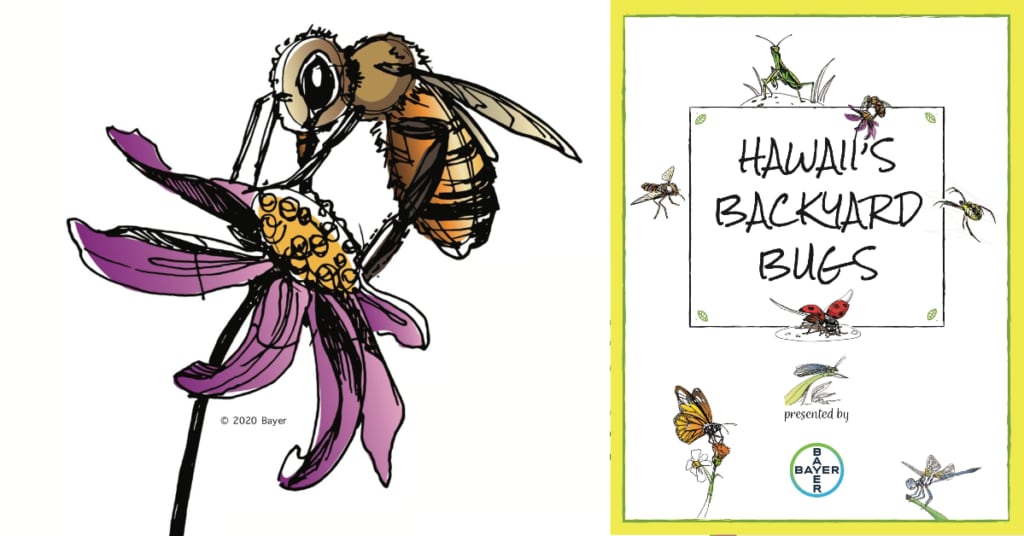- This Is Bayer
- Agriculture
- Consumer Health
- Pharmaceuticals
- Products
- Community
- News & Stories
- Careers
- This Is Bayer
- Agriculture
- Consumer Health
- Pharmaceuticals
- Products
- Community
- News & Stories
- Careers
Bayer Hawaii Releases Children’s Coloring Book about Hawaii’s Backyard Bugs
To celebrate #PollinatorWeek, Bayer is offering free educational resources for Hawaii's families.
Created in partnership with a local Maui artist, Bayer has created a coloring book as a fun and interactive way to teach children about the importance of good bugs and their contributions to agriculture.
Hawaii’s Backyard Bugs Coloring Book is now available for download HERE.
“Educating our youth in the area of science is a responsibility that we take very seriously at Bayer Hawaii. Visiting the classroom and interacting with students has always been a highlight for me, and while that currently is not an option, our goal is to provide fun online tools to further their science education while at home,” said Megan Manley, production associate at Bayer Hawaii. “During this time of uncertainty, we hope to be a resource for parents and encourage young scientists to continue exploring even in their own backyard.”
Backyard Bugs: The Good, the Bad, and the Beneficial
Small but mighty, insects play one of the most important roles in agriculture because they are essential to the pollination process. Did you know there are nearly one million identified insect species worldwide, and an additional two – 30 million species that have yet to be identified? Of those identified insect species, about 99 percent are beneficial to the environment – with over 10,000 insect species that can be found right here in Hawaii.
Hawaii’s Backyard Bugs Coloring Book is now available for download HERE.
Many insects provide important products and services that benefit humans, such as pollination, honey, and beeswax. Other insects are beneficial because they specialize in controlling other insects, some of which attack crops for food. These insects are known as pests. In order to deter these pests from damaging crops, it’s important for farmers to determine the best way to limit pest damage safely and economically. Integrated Pest Management (IPM) is a long-term prevention strategy that Bayer Hawaii has implemented across all of its farms that not only deters pests from destroying crops, but also helps to cultivate beneficial insects like the monarch butterfly and other pollinators.
Hawaii’s Backyard Bugs Coloring Book is now available for download HERE.
The monarch butterfly, also known as the king of butterflies, plays an important role in agriculture by assisting with the pollination of flowering crops. Over the last couple of years, Bayer has made a concerted effort across all of its Hawaii farms to restore pollinator habitats through conservation efforts and education.
Some of the other more well-known good bugs include honey bees, ladybugs, pirate bugs, green lacewings, assassin bugs, and praying mantis. One of the many benefits of good bugs is their ability to pollinate. About 35 percent of our food crops worldwide are made possible by pollinators. Another important trait is their ability to feed on what we consider bad bugs. For example, the praying mantis hunts a variety of flies, crickets and moths, and the green lacewing feeds on leafhoppers and mealybugs. Bad bugs can damage plants by feeding on leaves or harvestable products, while others cause damage by transmitting bacteria and viruses that make plants sick.
Bayer Hawaii’s IPM program includes proper pest identification, and considers a pest’s biology and other environmental factors. The goal of IPM is to establish healthy soils and crops by implementing a wide variety of safe treatments for pest management in the most sustainable way possible.
Hawaii’s Backyard Bugs Coloring Book is now available for download HERE.
